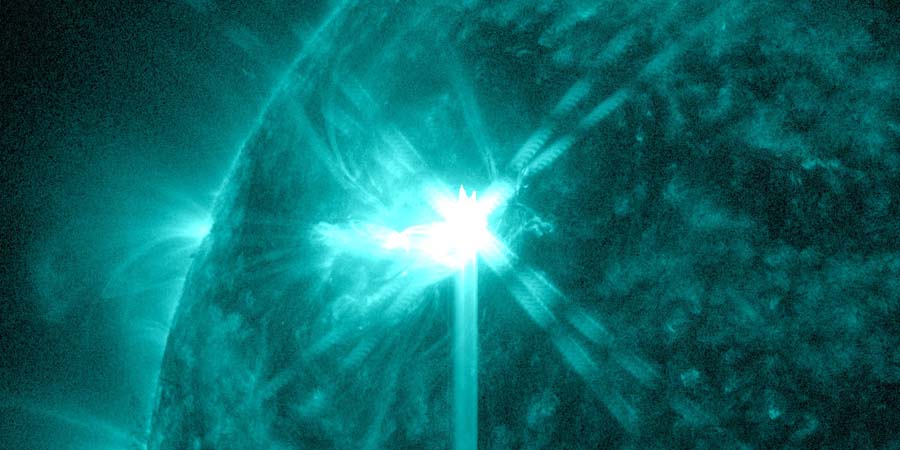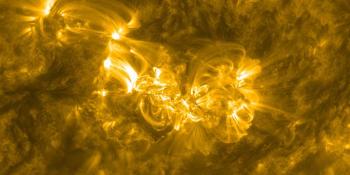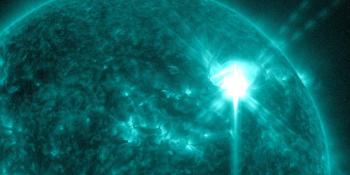Two X-class solar flares only 7 hours apart
czwartek, 22 lutego 2024 08:33 UTC

Sunspot region 3590 which is located at a fairly high latitude produced two impulsive X-class events. The first solar flare peaked yesterday at 23:07 UTC with a maximum X-ray flux of X1.9 and the second solar flare peaked today at 06:32 with a maximum observed X-ray flux of X1.7. Both events caused a brief strong R3 radio blackout at the day-side of our planet.
But the good news ends there. Both of these solar flares were impulsive and not eruptive. They did not launch a coronal mass ejection into space. As a matter of fact, it does not look like any ejecta at all was released during these events. There is a coronal mass ejection visible on SOHO/LASCO after the X1.9 event but it is heading towards the south-east and it came from a sunspot region still hiding behind the east limb. Another interesting fact is that sunspot region 3590 is located at a fairly high latitude for this phase of the Solar Cycle as sunspot regions get closer to the equator as we approach and pass solar maximum. Does this mean we are still far away from solar maximum or is it just an outlier? Time will tell! Let's hope sunspot region 3590 continues to develop and produces an eruptive solar flare in the near future as it is soon in a prime position to launch earth-directed coronal mass ejections.
Thank you for reading this article! Did you have any trouble with the technical terms used in this article? Our help section is the place to be where you can find in-depth articles, a FAQ and a list with common abbreviations. Still puzzled? Just post on our forum where we will help you the best we can!
Najnowsze wiadomości
Najnowsze wiadomości z forum
Wesprzyj SpaceWeatherLive.com!
Wielu ludzi odwiedza SpaceWeatherLive aby śledzić aktywność słoneczną lub sprawdzić czy jest szansa na zaobserwowanie zorzy polarnej. Niestety, większy ruch na stronie oznacza większe koszty utrzymania serwera. Dlatego, jeśli jesteś zadowolony ze strony SpaceWeatherLive, zachęcamy do wspierania nas finansowo. Dzięki temu będziemy mogli utrzymać naszą stronę.

Fakty na temat pogody kosmicznej
| Ostatnie rozbłyski klasy X | 2024/05/09 | X2.2 |
| Ostatnie rozbłyski klasy M | 2024/05/09 | M3.7 |
| Ostatnia burza geomagnetyczna | 2024/05/06 | Kp5 (G1) |
| Spotless days | |
|---|---|
| Ostatni dzień bez skazy | 2022/06/08 |
| Monthly mean Sunspot Number | |
|---|---|
| kwietnia 2024 | 136.5 +31.6 |
| Last 30 days | 163.9 +73.1 |


